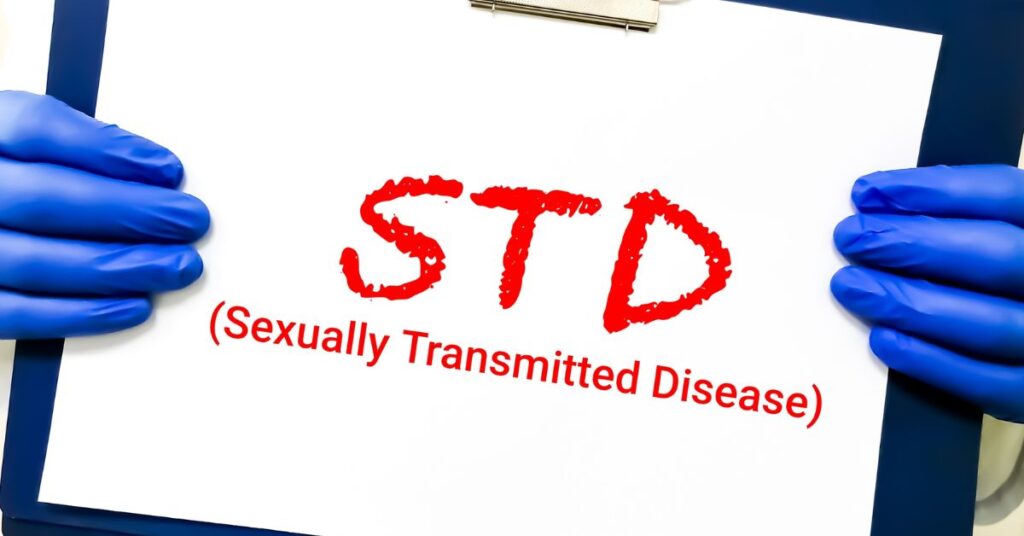Sexually Transmitted Diseases in Nepal
Sexually Transmitted Diseases (STDs) are caused by sexually transmitted infections (STIs). They are a serious health concern worldwide, including in Nepal. Regular screening and early treatment are necessary to manage STIs and prevent them from becoming STDs. Understanding the types, symptoms, causes and prevention of STDs is important for maintaining good health.
Types of Sexually Transmitted Diseases
- Chlamydia
- Gonorrhea
- Syphilis
- Human Papillomavirus (HPV)
- Herpes Simplex Virus (HSV)
- HIV/AIDS
- Trichomoniasis
Symptoms of Sexually Transmitted Diseases
Sexually Transmitted Diseases (STDs) can cause a wide range of symptoms but some people may not experience any symptoms at all. Common symptoms of STDs include:
- Unusual discharge from the penis or vagina.
- Painful or burning sensation when urinating.
- Sores, bumps or blisters on or around the genitals, anus or mouth.
- Itching, irritation or swelling in the genital area.
- Painful intercourse.
- Rash on the body, hands or feet.
- Fever.
- Swollen lymph nodes in the groin area.
- Abdominal pain (particularly in women).
- Unusual bleeding between menstrual periods (in women).
Each STD can have its own specific symptoms. For example:
- Chlamydia and Gonorrhea: Painful urination, discharge from the penis or vagina and pelvic pain.
- Syphilis: Sores on the genitals, rash, fever and swollen lymph nodes.
- HPV: Warts on the genitals or surrounding skin.
- HSV: Painful blisters or sores on the genitals or mouth.
- HIV/AIDS: Flu-like symptoms, weight loss, fever and infections.
- Trichomoniasis: Itching, burning, and unusual discharge from the genitals.
Causes of Sexually Transmitted Diseases
STDs are caused by bacteria, viruses or parasites. They are spread through vaginal, anal or oral sex. Some STDs like HPV and herpes can also spread through skin-to-skin contact.
How Common Are STDs in Nepal?
STDs are a significant health issue in Nepal. The prevalence is influenced by factors such as lack of awareness, limited access to healthcare and social stigma. HIV/AIDS is a particularly serious concern with many cases reported each year.
Risk Factors for Sexually Transmitted Diseases
- Multiple Sexual Partners: Increases the risk of exposure to infected individuals.
- Unprotected Sex: Lack of condom use during sex heightens the risk.
- Substance Abuse: Drug and alcohol use can lead to risky sexual behaviors.
- Young Age: Young people are more likely to engage in unprotected sex.
Effects of STDs on Mother and Child
A mother with an STD can pass the infection to her baby during pregnancy, childbirth or breastfeeding. This can cause health problems for the baby. In such cases, it’s important to get prompt medical care. Your healthcare provider can give you advice on how to manage and reduce the impact of an STD on your pregnancy. Following their guidance can help you and your baby stay healthy..
Impact on the Mother
- Health Complications: STDs can cause severe health problems such as pelvic inflammatory disease, which can lead to chronic pain and infertility.
- Increased Infection Risk: Certain STDs can weaken the immune system, making the mother more susceptible to other infections.
Impact on the Baby
- STDs can increase the risk of premature delivery and result in low birth weight.
- Babies can contract infections during birth, which may cause serious health issues like blindness or respiratory problems.
- Some STDs can lead to congenital infections that cause long-term health problems and developmental delays.
- Severe untreated STDs can increase the risk of miscarriage or stillbirth.
Treatment and Tests for Sexually Transmitted Diseases
- Testing: Regular screening for STDs is important. Tests include blood tests, urine tests and swabs of the affected area.
- Treatment: Most bacterial STDs like chlamydia and gonorrhea can be treated with antibiotics. Viral STDs like HIV and herpes are managed with antiviral medications.
Prevention of Sexually Transmitted Diseases
- Use Condoms: Consistent and correct use of condoms reduces the risk of STDs.
- Get Vaccinated: Vaccines are available for some STDs like HPV and hepatitis B.
- Regular Screening: Regular check-ups and testing can help detect and treat STDs early.
- Limit Sexual Partners: Reducing the number of sexual partners can lower the risk.
- Education and Awareness: Understanding how STDs spread and how to prevent them is vital.
Sexually transmitted diseases in Nepal are a serious health concern that requires attention and action. By understanding the types, symptoms, causes, and prevention methods, individuals can protect themselves and others from these infections. Regular testing, safe sexual practices, and sex education are key to reducing the prevalence of STDs in Nepal.

